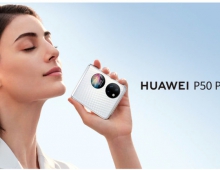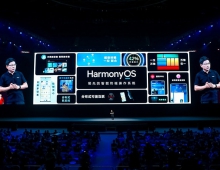
OPPO and Vivo Set To Enjoy Significant Smartphone Production Growth This Year
Huawei, OPPO and Vivo will maintain strong market performances this year in China, followed by LeEco, according to TrendForce. Among the major Chinese shmartphone brands, Huawei will maintain the first spot in 2016, in terms of production volume, TrendForce sdays. However, the company encounters setbacks in sales, and its year year-on-year growth rate is expected to be just 10.2%.
The sales of the Huawei’s newest flagship, P9, were not as robust as expected during the first half of 2016 even though it features a Leica-certified dual camera as the main selling point.
Conversely, OPPO and Vivo’s flagships, which were released around the same time, have been well-received by consumers because of their sleek surface designs and fast-charging capability. The production volumes of both OPPO and Vivo’s flagship smartphones are expected to keep rising through the year.
OPPO and Vivo’s projections for 2016 hand have been raised to 78 million and 66 million units, respectively. The year-on-year growth rates of these two brands will also exceed 40%.

The recent and rapid ascendency of another Chinese brand, LeEco, has also caught the attention of the market. Backed by a parent company that is flushed with both cash and video content, LeEco has aggressively expanded into different hardware device markets, from Internet-connected TV sets to smartphones. LeEco’s smartphone production volume just reached 5 million units last year, but this figure is expected to surpass 20 million this year, translating to a year-on-year growth rate of over 300%. Furthermore, LeEco has become the largest shareholder of Coolpad, another compatriot smartphone maker. After the tie-up between the two companies is completed, LeEco devices, which for now are limited to online sales, will become available in Coolpad’s physical retail stores. Looking ahead to 2017, TrendForce forecasts that LeEco will see another huge increase in its annual smartphone production volume.
Looking at Taiwanese smartphone brands, ASUS has made significant strides since it entered the market three years ago with high cost-performance offerings. In order to boost sales, ASUS this year switched most of its devices' application processors from Intel’s chips to Qualcomm’s as the latter have better capabilities and emit less heat. ASUS is currently the leader among Taiwanese brands and its production volume for 2016 is projected to hit 21.5 million units, up 34% from the 2015’s figure of 16 million.
The other major Taiwanese electronics brand, HTC, has dramatically shifted its product development focus to VR headsets. However, the company's product portfolio suggests that smartphones are still the company’s core business. Due to strong competition from Chinese brands, the production volume of HTC’s latest flagship, the HTC 10, will only be around 1 million units. The Taiwanese brand will take on additional smartphone production in the second half of 2016 as a result of receiving manufacturing contracts for Nexus phones from Google. Nonetheless, its overall production volume for the year will amount to only 13 million units, down 27% from last year’s 18 million.





















